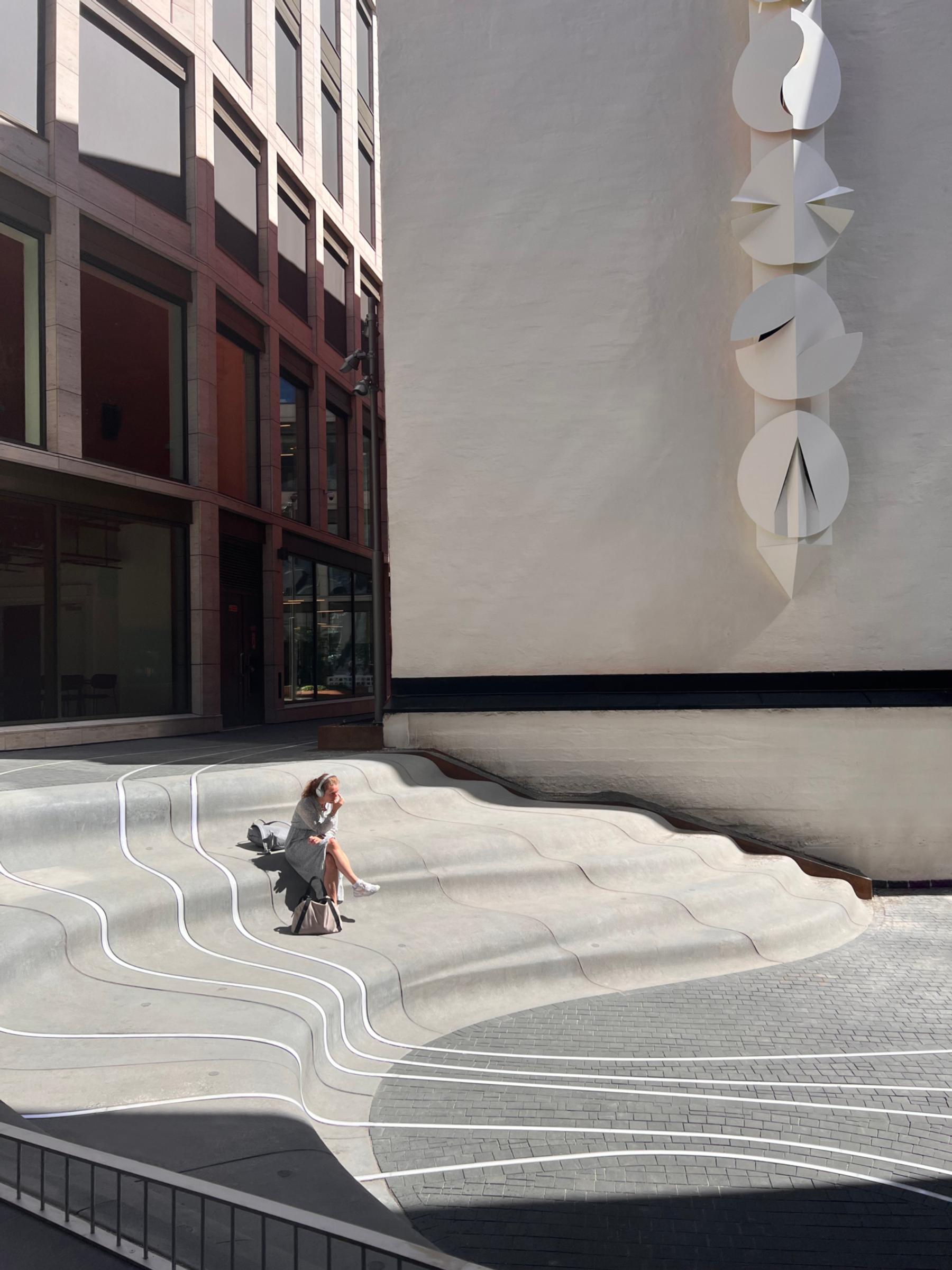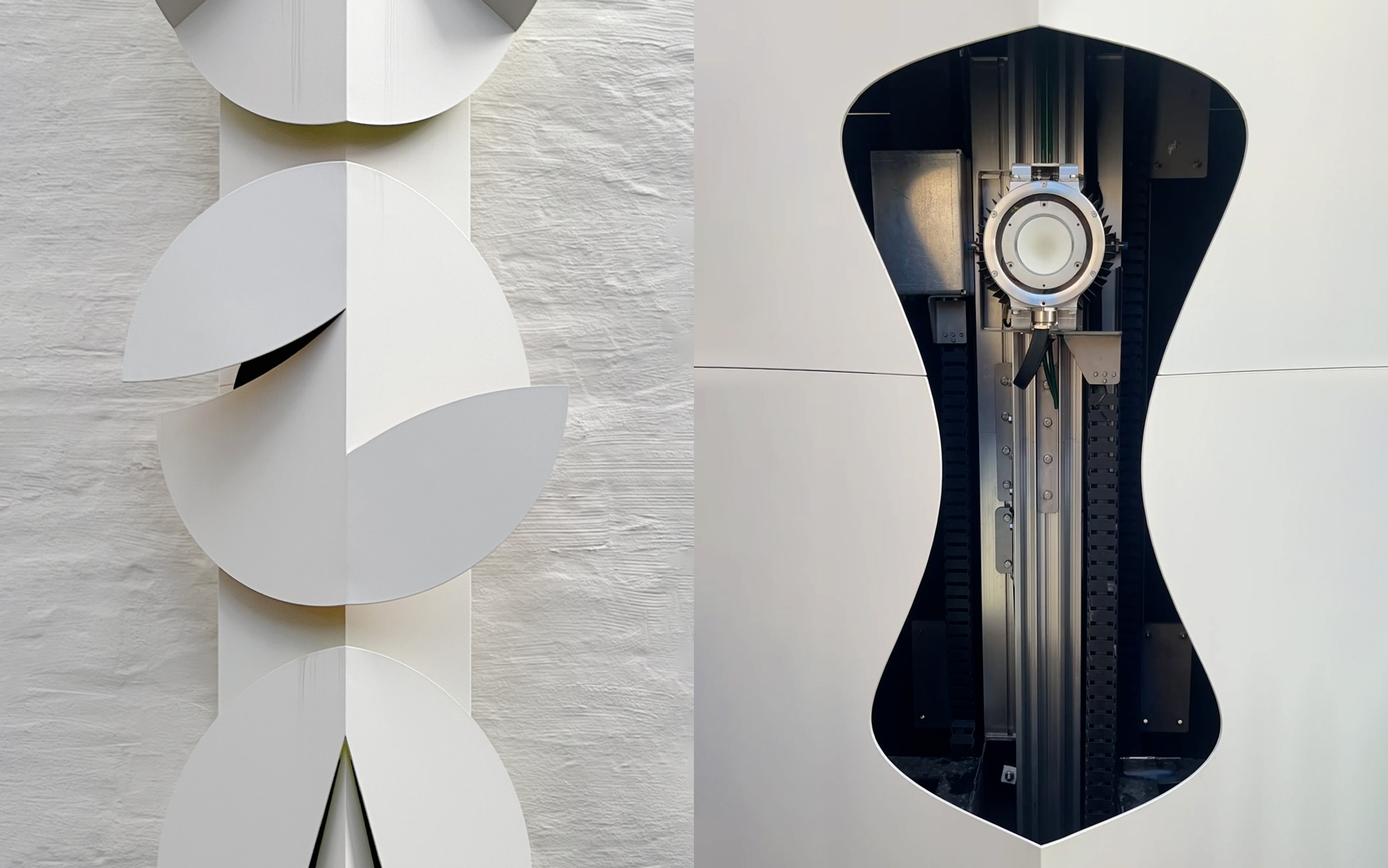Totem
2021
installation, sculpture
Aluminium, Steel, Servo motors, C++ code
Tullinløkka, Oslo
Totem is an illuminated wall sculpture featuring kinetic components, developed as a collaboration between Void and Norwegian artist Are Mokkelbost. The sculpture consists of five circular forms arranged vertically within a rectangular, diamond-shaped chassis that houses an automated lighting system. Three motorized light sources travel along internal rails, activating after sunset to create a time-based performance of illumination.
The sculpture's front surface maintains an off-white finish that blends with the mounting wall, while the reverse sides of the circular elements feature yellow and orange coloration. This dual-surface approach creates contrast between the neutral exterior and the warm interior palette, establishing a foundation for the dynamic color interactions generated by the moving light sources.

Totem at Tullinløkka, Oslo
© Einar Aslaksen
The internal lighting system creates continuous variations in luminance and chromatic output as the motorized sources traverse their predetermined paths. The precise cutting and folding of the circular components, combined with strategic perforations in the chassis, function as optical filters that mask and redirect light both within the sculpture and onto surrounding wall surfaces. This systematic light manipulation generates diffused color fields and geometric shadow patterns that extend the artwork's visual impact beyond its physical boundaries.

The mechanical system (developed by Intek Engineering) features three movable light fixtures that are controlled using custom software system developed in C++/Beckhoff PLC code
© Einar Aslaksen